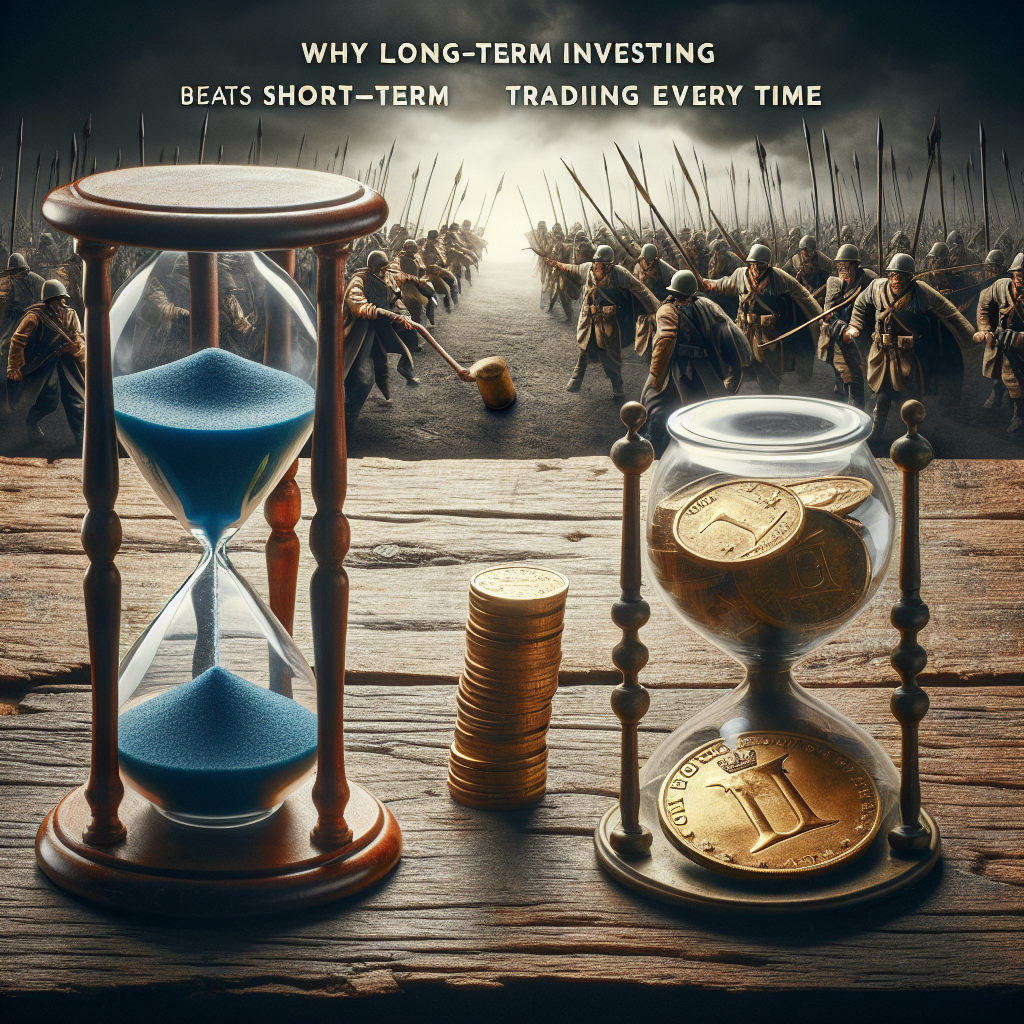Investing is often discussed in terms of strategies, goals, and timelines. While some investors prefer short-term trading for its allure of quick profits, long-term investing remains a tried-and-true strategy for building wealth and securing financial health. In this article, we’ll explore the undeniable benefits of long-term investing over short-term trading.
Understanding Long-Term Investing
Long-term investing involves purchasing assets and holding them for an extended period, typically five years or more. This strategy aims to capitalize on the power of compound growth and reduces exposure to market volatility. Investors often focus on fundamentals, such as revenue growth, earnings, and market conditions, rather than short-term price movements.
The Power of Compounding
One of the most compelling reasons to invest long-term is the power of compounding. When you reinvest your earnings, the growth is not just on your principal investment but also on the accumulated returns. Over time, this can lead to exponential growth:
- Example: If you invest $10,000 at an average annual return of 7%, in 30 years, it could grow to over $76,000 without any additional contributions.
The Dangers of Short-Term Trading
Market Volatility and Emotional Stress
Short-term trading often involves buying and selling stocks or assets rapidly, capitalizing on small price fluctuations. While this can yield quick profits, it also exposes traders to higher risks and stress. Market volatility can result in significant losses in a very short period, which can lead to emotional decision-making.
High Transaction Costs
Frequent buying and selling incur substantial transaction fees, taxes, and commissions that can erode profits. These costs accumulate quickly and can turn a potentially profitable trade into a loss. Long-term investors, however, generally incur fewer fees due to their buy-and-hold approach.
Lack of Time for Research
Short-term trading can leave little room for thorough research. Many traders rely on gut feelings or trending news rather than evaluating the fundamentals that drive a company’s profits. Long-term investors tend to analyze businesses more deeply, focusing on quality and potential for growth, ultimately leading to better investment decisions.
Benefits of Long-Term Investing
Steady Growth and Returns
Long-term investing allows for a more stable growth trajectory, as the market tends to rise over time. Historical data shows that, despite short-term downturns, stock markets generally trend upwards. With patience and time, investors can weather market volatility and enjoy substantial returns.
Tax Advantages
Long-term investments often benefit from favorable tax treatment. In many jurisdictions, assets held for over a year qualify for long-term capital gains tax rates, which are typically lower than short-term rates. This can significantly impact your overall returns, allowing you to keep more of your profits.
Reduced Risk of Market Timing
Timing the market is notoriously difficult, even for seasoned investors. Long-term investing mitigates the pressure to predict market movements. By focusing on long-term trends rather than day-to-day fluctuations, investors reduce the risk associated with market timing, ensuring they don’t miss out on growth periods.
Building a Sustainable Portfolio
Diversification
Long-term investors often embrace diversification, spreading investments across various sectors and asset classes. This minimizes risk and enhances the potential for steady returns over time. By building a well-rounded portfolio, you can hedge against downturns in individual sectors or assets.
Adapting to Change
Long-term investing allows you to adapt your strategy as market conditions and personal financial goals evolve. It gives you the freedom to adjust your asset allocation, reinvest dividends, or even shift into different sectors without the pressure of immediate results.
Conclusion: The Case for Long-Term Investing
While short-term trading may seem appealing for its potential rapid gains, long-term investing emerges as the superior strategy for sustainable wealth accumulation. Its advantages—compounding growth, reduced risks, tax benefits, and lower transaction costs—underscore the importance of patience and persistence in the investment world. By focusing on long-term strategies, you not only position yourself for financial success but also create a more stable and manageable investment journey.
Invest wisely, think long-term, and watch your wealth grow.

